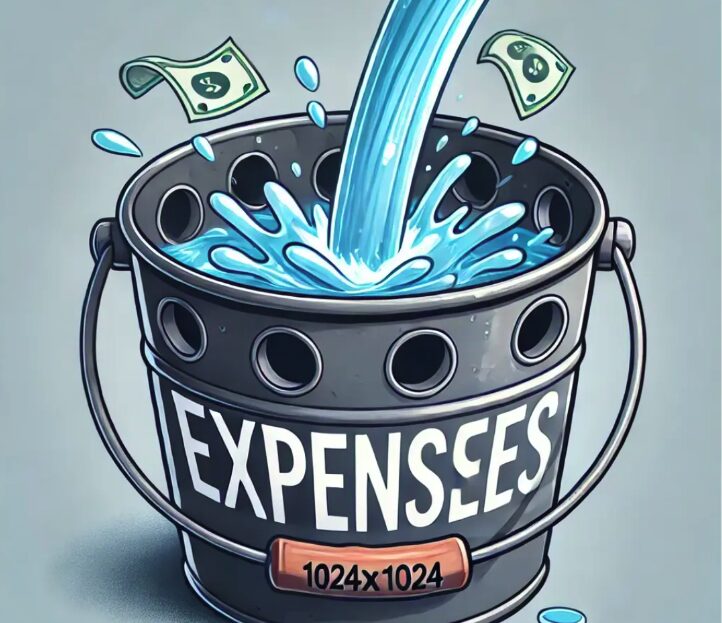Reducing business expenses is crucial for improving your bottom line and ensuring the long-term sustainability of your business. Here are some practical strategies you can implement to cut costs without sacrificing quality or efficiency:
1. Review and Renegotiate Supplier Contracts
One of the easiest ways to reduce expenses is by reviewing your existing supplier contracts. Often, long-term relationships with suppliers can lead to better terms or discounts, but only if you ask for them.
- Action Steps:
- Review your supplier agreements annually.
- Contact your suppliers and negotiate for better terms, bulk discounts, or early payment discounts.
- Consider alternative suppliers if your current ones aren’t willing to offer competitive pricing.
- Example: If you’ve been working with the same office supply vendor for years, reach out to see if they can offer you a discount on bulk purchases or if you can negotiate better payment terms.
2. Automate and Streamline Operations
Automating repetitive tasks can save you both time and money. By using technology to handle routine operations, you reduce the need for manual labor, which can lower your payroll expenses.
- Action Steps:
- Identify tasks that can be automated, such as invoicing, payroll, or inventory management.
- Invest in software solutions like Xero, QuickBooks, or specialized tools that can handle these tasks efficiently.
- Train your staff to use these tools effectively.
- Example: Automating your invoicing process can reduce the time your staff spends on billing and collections, freeing them up to focus on more strategic tasks.
3. Optimize Your Workspace
Your physical workspace can be a significant expense, especially if you’re paying for more space than you need. Consider whether downsizing, subletting unused space, or moving to a more cost-effective location could save you money.
- Action Steps:
- Evaluate your current workspace to see if it meets your needs or if you have excess capacity.
- If you have unused space, consider subletting it to another business.
- Explore the possibility of moving to a smaller or more affordable location.
- Example: If your office space is underutilized, consider subletting part of it to another business or moving to a smaller office to reduce rent and utility costs.
4. Implement Energy-Saving Measures
Energy costs can add up quickly, but implementing energy-saving measures can significantly reduce your utility bills. Simple changes can lead to substantial savings over time.
- Action Steps:
- Replace traditional light bulbs with energy-efficient LED bulbs.
- Install programmable thermostats to control heating and cooling costs.
- Encourage staff to turn off lights and equipment when not in use.
- Example: Switching to energy-efficient lighting and using smart thermostats can lower your electricity bills by up to 30%, leading to significant savings over the course of a year.
5. Outsource Non-Core Functions
Outsourcing non-core functions, such as accounting, HR, or IT support, can be more cost-effective than hiring full-time staff for these roles. By outsourcing, you only pay for the services you need, when you need them.
- Action Steps:
- Identify non-core functions that could be outsourced, such as bookkeeping, payroll, or IT support.
- Research and select reputable outsourcing providers who can deliver high-quality services at a lower cost.
- Monitor the performance of outsourced services to ensure they meet your expectations.
- Example: Outsourcing your accounting tasks to a third-party provider can save you the cost of hiring a full-time accountant while ensuring that your financial management is handled professionally.
6. Control Inventory Costs
Effective inventory management can reduce the costs associated with overstocking or stockouts. By optimizing your inventory levels, you can minimize storage costs and free up cash flow.
- Action Steps:
- Implement an inventory management system to track stock levels in real-time.
- Use demand forecasting to order only the inventory you need.
- Negotiate with suppliers for just-in-time delivery to reduce storage costs.
- Example: By using inventory management software, you can avoid over-ordering and reduce the costs associated with storing excess inventory, leading to lower overall expenses.
7. Review Subscriptions and Services
Many businesses sign up for subscriptions or services that they no longer use or need. Regularly reviewing these expenses can help you identify areas where you can cut costs.
- Action Steps:
- Conduct a quarterly review of all your subscriptions and services.
- Cancel any that are no longer necessary or that provide little value to your business.
- Consolidate services where possible to take advantage of bundle pricing.
- Example: If you’re paying for multiple software subscriptions that perform similar functions, consider consolidating them into one platform to save on costs.
8. Implement a Cost-Conscious Culture
Encouraging a cost-conscious culture among your employees can lead to significant savings. When everyone in your organization is mindful of expenses, small savings can add up to big results.
- Action Steps:
- Educate your team about the importance of cost management and involve them in identifying potential savings.
- Set clear guidelines for expense approvals and spending limits.
- Recognize and reward employees who come up with cost-saving ideas.
- Example: Encourage employees to be mindful of office supplies and reduce waste. Small actions like printing double-sided or reusing materials can lead to noticeable savings over time.
9. Use Tax Deductions and Credits
Taking full advantage of available tax deductions and credits can reduce your overall tax burden, leaving more money in your business. Ensure you’re claiming all eligible deductions, such as home office expenses, equipment purchases, and employee benefits.
- Action Steps:
- Work with your accountant to identify all potential tax deductions and credits available to your business.
- Keep accurate records and receipts to substantiate your claims.
- Plan your purchases and investments strategically to maximize tax benefits.
- Example: If your business is eligible for a tax credit for energy-efficient improvements, you could save money on both your taxes and your utility bills by upgrading your equipment.
Conclusion: Small Changes, Big Savings
Reducing business expenses doesn’t necessarily mean cutting corners—it’s about making smart, strategic decisions that improve efficiency and free up resources for growth. By implementing these practical strategies, you can lower your costs, increase your profitability, and ensure the long-term success of your business.
Remember, the key to effective cost management is consistency. Regularly review your expenses, involve your team in cost-saving initiatives, and stay proactive about finding new ways to reduce costs. With a disciplined approach, you’ll see significant savings that can be reinvested into your business’s future.


